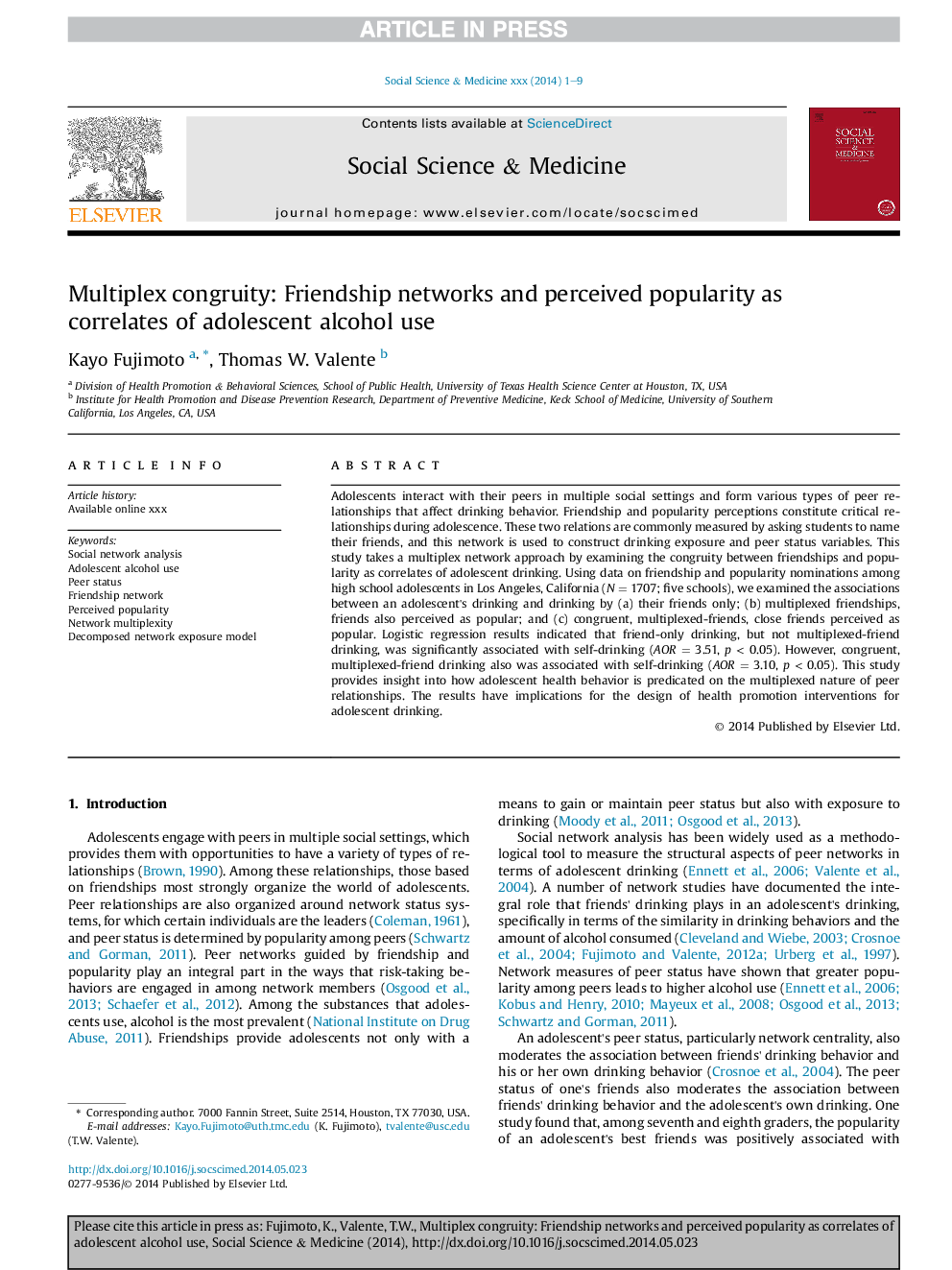| Article ID | Journal | Published Year | Pages | File Type |
|---|---|---|---|---|
| 7333618 | Social Science & Medicine | 2015 | 9 Pages |
Abstract
Adolescents interact with their peers in multiple social settings and form various types of peer relationships that affect drinking behavior. Friendship and popularity perceptions constitute critical relationships during adolescence. These two relations are commonly measured by asking students to name their friends, and this network is used to construct drinking exposure and peer status variables. This study takes a multiplex network approach by examining the congruity between friendships and popularity as correlates of adolescent drinking. Using data on friendship and popularity nominations among high school adolescents in Los Angeles, California (N = 1707; five schools), we examined the associations between an adolescent's drinking and drinking by (a) their friends only; (b) multiplexed friendships, friends also perceived as popular; and (c) congruent, multiplexed-friends, close friends perceived as popular. Logistic regression results indicated that friend-only drinking, but not multiplexed-friend drinking, was significantly associated with self-drinking (AOR = 3.51, p < 0.05). However, congruent, multiplexed-friend drinking also was associated with self-drinking (AOR = 3.10, p < 0.05). This study provides insight into how adolescent health behavior is predicated on the multiplexed nature of peer relationships. The results have implications for the design of health promotion interventions for adolescent drinking.
Keywords
Related Topics
Health Sciences
Medicine and Dentistry
Public Health and Health Policy
Authors
Kayo Fujimoto, Thomas W. Valente,
